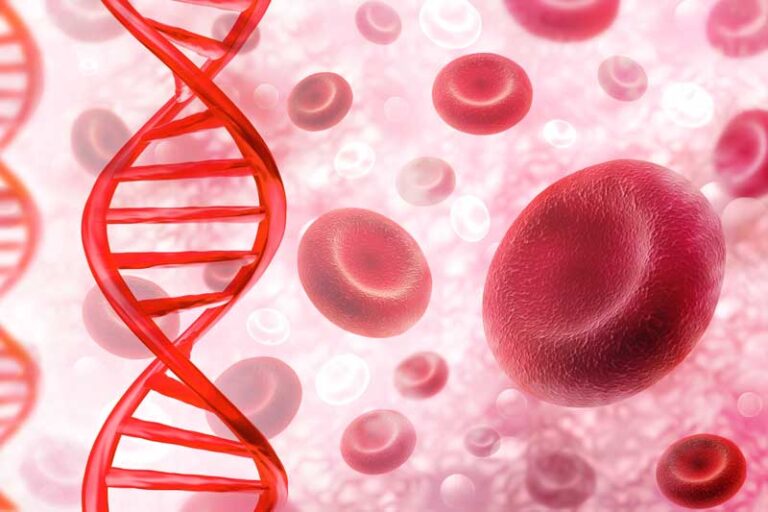Understanding the Link Between Johnson & Johnson’s COVID Vaccine and Blood Clots
Introduction
Recently, the Johnson & Johnson COVID-19 vaccine has been the subject of intense scrutiny and concern due to its association with rare but serious blood clotting disorders. This development has sparked a wave of apprehension among the public and healthcare professionals alike as they grapple with the implications of these findings on the ongoing vaccination efforts.
Initially hailed for its single-dose convenience and different technological approach compared to mRNA vaccines, a series of challenges have marked the Johnson & Johnson vaccine’s journey. The most significant of these emerged in April 2021, when reports of thrombosis with thrombocytopenia syndrome (TTS) , a rare clotting disorder , began to surface among vaccine recipients. This led to a temporary pause in its administration as health authorities sought to understand the nature and frequency of these incidents.
As of May 2023, the landscape for the Johnson & Johnson vaccine in the United States has shifted considerably. The Centers for Disease Control and Prevention (CDC) and the Food and Drug Administration (FDA) have updated their guidelines, placing new restrictions on the vaccine’s use. These measures reflect a cautious approach, limiting the vaccine’s administration to adults aged 18 and older who specifically request it or cannot receive other available vaccines due to medical reasons.
This introduction sets the stage for a deeper exploration into the complex and evolving narrative of the Johnson & Johnson COVID-19 vaccine. It underscores the importance of understanding the balance between vaccine benefits and risks, and highlights the ongoing efforts to ensure public safety in the face of unprecedented health challenges.
Background on the Johnson & Johnson COVID-19 Vaccine
The Johnson & Johnson COVID-19 vaccine, developed by Janssen Pharmaceuticals, a subsidiary of Johnson & Johnson, represented a significant milestone in the global fight against the COVID-19 pandemic. Unlike the mRNA vaccines developed by Pfizer-BioNTech and Moderna, the Johnson & Johnson vaccine utilized a different technology, employing a viral vector approach. This method uses a modified version of a different virus (the vector) to deliver important instructions to our cells to trigger an immune response against COVID-19.
One of the most notable advantages of the Johnson & Johnson vaccine was its single-dose regimen. This feature was particularly appealing as it promised to expedite the vaccination process, making it an ideal option for hard-to-reach populations and regions with limited healthcare resources. The ease of storage and transportation of the Johnson & Johnson vaccine, due to its less stringent refrigeration requirements compared to mRNA vaccines, further added to its appeal and potential global impact.
However, the trajectory of the Johnson & Johnson vaccine took a turn in April 2021. Concerns were raised following reports of rare but severe cases of blood clots in individuals who had received the vaccine. These cases were unusual due to their combination with low levels of blood platelets, a condition known as thrombosis with thrombocytopenia syndrome (TTS). The occurrence of these events led to a temporary pause in the use of the vaccine. This pause was a precautionary measure to allow health experts and regulatory bodies to thoroughly investigate these cases and assess the vaccine’s safety profile.
The pause also reflected a commitment to transparency and public safety, as health authorities and the vaccine manufacturer sought to understand the nature of these adverse events. This period allowed for the collection and analysis of data, and for healthcare providers to be alerted to the potential risks and signs of TTS. The decision to pause, a standard procedure in vaccine safety monitoring, demonstrated the rigorous safety protocols in place to ensure the well-being of vaccine recipients.
Understanding Thrombosis with Thrombocytopenia Syndrome (TTS)
Thrombosis with thrombocytopenia syndrome (TTS) is a rare but serious condition that has been linked to the Johnson & Johnson COVID-19 vaccine. Understanding this syndrome is crucial in assessing the vaccine’s safety and making informed decisions about its use.
- Explanation of TTS
- TTS is characterized by the unusual combination of thrombosis (blood clots) and thrombocytopenia (low platelet count).
- Blood clots typically block veins or arteries, which can be life-threatening if they occur in critical areas like the brain, lungs, or heart.
- Thrombocytopenia, on the other hand, is a condition where the blood has an abnormally low number of platelets, which are essential for normal blood clotting.
- The paradox in TTS is the occurrence of blood clots despite a low platelet count, which is an atypical presentation in medical terms.
- Statistics on Reported Cases and Demographics Most at Risk
- As of the latest data, TTS remains a very rare occurrence. For instance, out of more than 18 million doses of the Johnson & Johnson vaccine administered, there were about 60 reported cases of TTS.
- The risk of developing TTS appears to be higher in certain demographics, particularly in women aged 30 to 49, where the incidence was approximately 1 in 100,000.
- It’s important to note that these numbers represent a very small fraction of the total vaccinated population, underscoring the rarity of the condition.
- Comparison with Other Vaccines and Their Associated Risks
- When comparing the Johnson & Johnson vaccine to mRNA vaccines like Pfizer-BioNTech and Moderna, it’s noteworthy that, as of the current data, mRNA vaccines have not been linked to TTS.
- The AstraZeneca COVID-19 vaccine, which, like Johnson & Johnson, uses a viral vector technology, has also been associated with TTS, particularly in Europe and other regions where it is widely used.
- The occurrence of TTS in recipients of viral vector vaccines (Johnson & Johnson and AstraZeneca) suggests a potential mechanism related to this specific vaccine technology, although research is ongoing to fully understand the cause.
- It is crucial to balance the risk of TTS against the risk of COVID-19 itself, which also poses a significant risk of severe illness, including blood clots, particularly in severe cases.
Understanding TTS in the context of COVID-19 vaccination is a key component in ensuring public health safety and maintaining trust in the vaccination process. While the risk of TTS is very low, awareness and vigilance are important, especially for healthcare providers and individuals considering vaccination options. This knowledge allows for informed decision-making and helps in identifying and managing potential risks effectively.
The Johnson & Johnson Vaccine: Current Status and Restrictions
The status and usage guidelines for the Johnson & Johnson COVID-19 vaccine have evolved significantly in response to the concerns over Thrombosis with Thrombocytopenia Syndrome (TTS). Understanding the current stance of health authorities on this vaccine is crucial for both healthcare providers and the public.
- FDA’s Latest Decision and Restrictions
- As of the latest updates, the U.S. Food and Drug Administration (FDA) has imposed new restrictions on the use of the Johnson & Johnson vaccine.
- These restrictions are primarily based on the data regarding the rare but serious risk of TTS associated with the vaccine.
- The FDA now limits the vaccine’s use to adults aged 18 and older who specifically request the Johnson & Johnson vaccine or who cannot receive other available COVID-19 vaccines due to medical reasons, such as allergies to mRNA vaccine components.
- Who Can Still Receive the J&J Vaccine
- The Johnson & Johnson vaccine remains an option for individuals who have a preference for it over mRNA vaccines, provided they are informed of the risks and benefits.
- It is also available for those who may not have access to the Pfizer-BioNTech or Moderna vaccines, or have medical conditions that prevent them from receiving these alternatives.
- The decision to receive the Johnson & Johnson vaccine should be made in consultation with healthcare providers, taking into account individual health profiles and potential risks.
- Balancing the Risks: COVID-19 vs. Vaccine-Related TTS
- When considering the Johnson & Johnson vaccine, it is important to weigh the risk of TTS against the risk of COVID-19.
- COVID-19 itself poses significant health risks, including severe respiratory illness, long-term health effects (long COVID), and a noted risk of blood clots, especially in severe cases.
- The risk of developing TTS from the Johnson & Johnson vaccine, while serious, is extremely rare.
- Public health experts and regulatory bodies emphasize that the benefits of vaccination in preventing COVID-19, with its potential for severe outcomes, outweigh the small risk of TTS associated with the vaccine.
- This risk-benefit analysis is a dynamic process and may vary based on individual health factors, local COVID-19 case rates, and the availability of other vaccine options.
The current status and restrictions surrounding the Johnson & Johnson vaccine reflect a cautious approach by health authorities, prioritizing patient safety while also considering the broader public health need for effective COVID-19 vaccination options. This approach underscores the importance of informed choice and the need for ongoing monitoring and research to ensure the safety and efficacy of all COVID-19 vaccines.
Comparative Analysis with Other Vaccines
In the landscape of COVID-19 vaccines, understanding the differences between the various types, such as the Johnson & Johnson (J&J) vaccine and the mRNA vaccines (Pfizer-BioNTech and Moderna), is crucial. Additionally, it’s important to consider the similarities and differences with other viral vector vaccines like AstraZeneca, especially in the context of rare side effects like Thrombosis with Thrombocytopenia Syndrome (TTS).
- Differences Between J&J Vaccine and mRNA Vaccines
- Technology: The J&J vaccine uses a viral vector approach, employing a harmless adenovirus to deliver genetic material into cells, prompting an immune response against COVID-19. In contrast, mRNA vaccines (Pfizer-BioNTech and Moderna) use messenger RNA to instruct cells to produce the spike protein of the virus, triggering an immune response.
- Dosage and Storage: The J&J vaccine is a single-dose vaccine, which offers logistical advantages, especially in areas with limited healthcare infrastructure. mRNA vaccines require two doses for full efficacy. Additionally, mRNA vaccines have more stringent storage requirements (ultra-cold temperatures) compared to the J&J vaccine.
- Efficacy and Side Effects: While all vaccines have shown high efficacy in preventing severe COVID-19, their efficacy rates in clinical trials varied slightly. The side effect profiles also differ, with mRNA vaccines commonly causing arm pain, fatigue, and fever, but not associated with TTS.
- Similar Issues with the AstraZeneca Vaccine
- Vaccine Technology: Like the J&J vaccine, the AstraZeneca vaccine is also a viral vector vaccine. It uses a similar approach to introduce the genetic material of the virus into the body.
- Reports of TTS: Both the AstraZeneca and J&J vaccines have been associated with rare cases of TTS. This similarity has drawn attention to the potential link between viral vector technology and the occurrence of these rare blood clotting events.
- Global Response: The response to the AstraZeneca vaccine has varied internationally, with some countries limiting its use to certain age groups or preferring mRNA vaccines due to concerns over TTS. This mirrors the cautious approach taken with the J&J vaccine in the U.S.
This comparative analysis highlights that while all COVID-19 vaccines available have been effective in combating the pandemic, they differ in their technology, administration, storage requirements, and side effect profiles. The rare occurrence of TTS in viral vector vaccines like J&J and AstraZeneca has been a significant point of consideration in vaccine deployment strategies globally. Understanding these differences is key for both healthcare providers and the public in making informed decisions about vaccination.
Blood Clots: A Broader Perspective
To fully appreciate the concerns surrounding the Johnson & Johnson COVID-19 vaccine and its association with rare blood clotting disorders, it’s important to understand blood clots in a broader context. This includes their general prevalence and causes, as well as the specific risks associated with COVID-19 infection.
- Prevalence and Causes of Blood Clots
- General Occurrence: Blood clots are relatively common in the general population. They can occur in various parts of the body, including the legs (deep vein thrombosis) and lungs (pulmonary embolism).
- Risk Factors: Several factors increase the risk of blood clots, including prolonged immobility (such as long flights or bed rest), certain medical conditions (like heart disease or cancer), smoking, obesity, pregnancy, and the use of hormonal medications like birth control pills.
- Mechanism: Blood clots form when blood thickens and clumps together. While this process is crucial for stopping bleeding when injured, clots can be dangerous when they form inappropriately and block blood flow.
- Link Between COVID-19 Infection and Blood Clots
- Increased Risk with COVID-19: COVID-19 infection has been associated with a higher risk of blood clots. This risk is particularly pronounced in patients with severe COVID-19 symptoms.
- Mechanism in COVID-19: The virus can cause inflammation and damage to blood vessels, leading to abnormal blood clotting. In severe cases, this can result in complications such as strokes, heart attacks, and pulmonary embolism.
- Statistics: Studies have shown that the incidence of blood clots is significantly higher in COVID-19 patients compared to those without the virus. The risk is especially elevated in hospitalized patients and those in intensive care units.
- Comparative Risk: The risk of blood clots due to COVID-19 infection is considerably higher than the risk posed by vaccination, including the rare instances of TTS associated with the Johnson & Johnson vaccine.
Recognizing Symptoms and Seeking Help
After receiving a COVID-19 vaccine, including the Johnson & Johnson vaccine, it’s important for individuals to be aware of potential symptoms, especially those that might indicate rare but serious conditions like Thrombosis with Thrombocytopenia Syndrome (TTS). Prompt recognition of these symptoms and seeking timely medical attention are crucial for effective treatment and outcomes.
- List of Symptoms to Watch for Post-Vaccination
- General Side Effects: Common side effects of COVID-19 vaccines include pain at the injection site, fatigue, headache, muscle pain, chills, fever, and nausea. These typically resolve within a few days.
- Symptoms of Concern: While extremely rare, individuals should be vigilant for symptoms that might indicate more serious issues, such as TTS, particularly within three weeks after receiving the Johnson & Johnson vaccine. These symptoms include:
- Severe headache or blurred vision.
- Shortness of breath.
- Chest pain.
- Leg swelling.
- Persistent abdominal pain.
- Unusual skin bruising or pinpoint round spots beyond the site of vaccination.
- Importance of Seeking Medical Attention
- Prompt Action: If any of the above symptoms are experienced, it is crucial to seek medical attention immediately. Early detection and treatment of conditions like TTS can significantly improve outcomes.
- Informing Healthcare Providers: When seeking medical care, it’s important to inform healthcare providers about the recent COVID-19 vaccination, as this information can guide diagnostic and treatment decisions.
- Awareness and Communication: Healthcare providers should also be aware of the potential for TTS and other vaccine-related complications, ensuring they can respond appropriately to patient concerns and symptoms.
The key message for individuals is to listen to their bodies and not hesitate to seek medical advice if they experience unusual symptoms following vaccination.
Conclusion
The discussion surrounding the Johnson & Johnson COVID-19 vaccine, particularly in relation to rare cases of Thrombosis with Thrombocytopenia Syndrome (TTS), highlights several critical aspects of the ongoing vaccination efforts against the pandemic.
- Key Points Summary
- The Johnson & Johnson vaccine, using viral vector technology, initially promised a convenient single-dose regimen, but concerns arose due to rare instances of TTS.
- TTS, characterized by blood clots combined with low platelet counts, is extremely rare but serious. The risk appears slightly higher in certain demographics, particularly women aged 30 to 49.
- Compared to mRNA vaccines (Pfizer-BioNTech and Moderna), which have not been linked to TTS, the Johnson & Johnson vaccine has unique storage, dosage, and side effect profiles.
- The AstraZeneca vaccine, similar in technology to Johnson & Johnson, has also faced concerns over TTS in other countries.
- Blood clots in general are a common medical condition with various causes, and the risk of clotting is significantly higher with COVID-19 infection than with vaccination.
- Recognizing symptoms post-vaccination and seeking prompt medical attention is crucial for addressing any potential adverse effects effectively.
- Importance of Informed Decision-Making
- Making informed decisions about COVID-19 vaccination involves understanding the benefits and risks associated with each vaccine.
- The decision to receive a particular vaccine should be based on a comprehensive evaluation of individual health factors, vaccine availability, and the current understanding of vaccine safety and efficacy.
- Staying Updated and Consulting Healthcare Providers
- The landscape of COVID-19 and its vaccines is continually evolving. Staying informed with the latest information and guidelines is essential.
- Consulting healthcare providers for personalized advice is crucial. They can offer guidance tailored to individual health profiles and circumstances, ensuring the best possible decision regarding vaccination.
In conclusion, the journey of the Johnson & Johnson COVID-19 vaccine has been marred by the shadow of Thrombosis with Thrombocytopenia Syndrome (TTS), casting a pall over its role in the fight against the pandemic. These rare but severe cases have sown seeds of doubt and concern, complicating the already daunting task of global vaccination. Navigating the intricacies of vaccine safety, particularly in recognizing and responding to potential adverse symptoms, has become a critical, yet burdensome, aspect of the vaccination process. As we trudge through the relentless challenges posed by COVID-19, relying on informed decision-making becomes a necessity, albeit one fraught with complexities and uncertainties. Guided by ever-evolving scientific evidence and the need for individualized healthcare advice, we find ourselves in a continuous struggle to balance safety with the urgent need to stem the tide of the pandemic.
References
For detailed information and a comprehensive understanding of the topics discussed, please refer to the following source:
- Yale Medicine. “The Link Between J&J’s COVID Vaccine and Blood Clots: What You Need to Know.” Yale Medicine, 2021. Yale Medicine Article.
This article provides in-depth insights into the Johnson & Johnson COVID-19 vaccine, its association with Thrombosis with Thrombocytopenia Syndrome (TTS), and the broader context of vaccine safety and efficacy.









